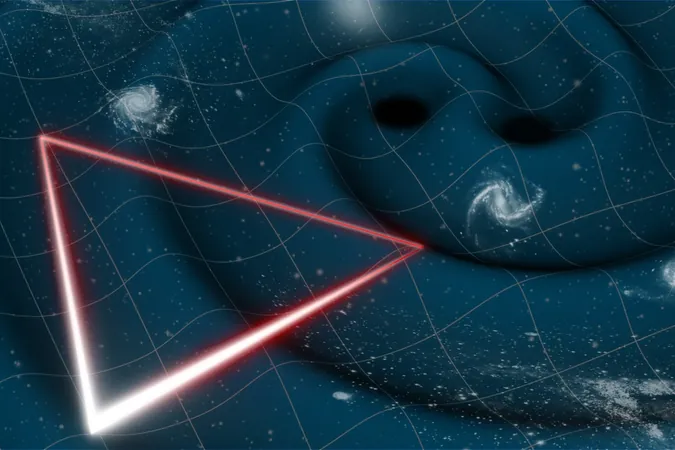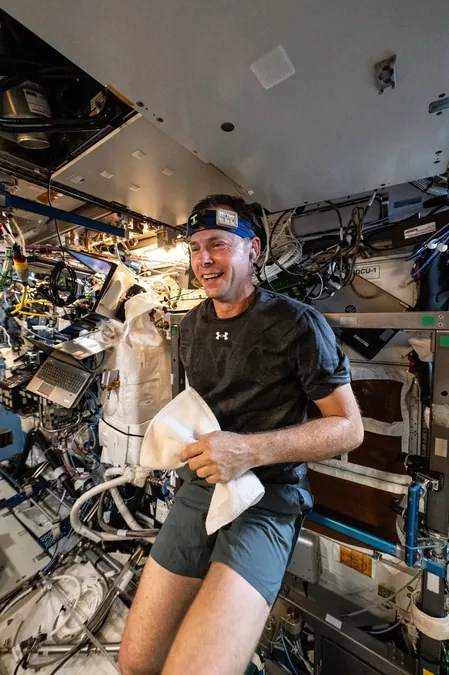
Unveiling LISA: The Groundbreaking Gravitational Wave Observatory Set to Transform Our Understanding of the Universe!
2024-09-28
Author: Sophie
In approximately 11 years, a groundbreaking mission, the Laser Interferometer Space Antenna (LISA), will embark on its journey into the cosmos. This ambitious project, decades in the making, has the potential to revolutionize our comprehension of the universe by detecting elusive gravitational waves—ripples in spacetime caused by the movement of massive celestial objects.
Much like the iconic Hubble Space Telescope, which transformed our view of cosmic structures, and the newly launched James Webb Space Telescope, LISA aims to push the boundaries of astronomical discovery. It will achieve this by uncovering phenomena that traditional ground-based observatories cannot, specifically targeting the intricate world of gravitational waves.
Understanding Gravitational Waves
Gravitational waves are subtle distortions in the fabric of spacetime generated by some of the most massive events in the universe, such as the collisions of black holes or neutron stars. While these waves travel at the speed of light, they possess unique properties that can only be detected using advanced technology and highly sensitive equipment.
The first gravitational waves were confirmed by the Laser Interferometer Gravitational-Wave Observatory (LIGO) and its European counterpart, Virgo, in 2015. Since then, over 100 detections have reshaped our understanding of astrophysical processes, allowing scientists to refine models regarding the size and mechanics of black holes and neutron stars.
LISA's Innovative Approach to Detection
LISA, conceived over 30 years ago, has now entered a new phase of development led by the European Space Agency (ESA). According to Ewan Fitzsimons, a principal investigator involved in the mission, LISA will utilize laser interferometry—a technique that measures subtle changes in distance using the properties of laser beams. This approach differs fundamentally from traditional telescopes, as gravitational waves do not generate light but instead require extremely precise measurements of lasers to detect their minute effects.
The project’s design includes three spacecraft arranged in a triangular constellation orbiting the Sun. This configuration will allow LISA to achieve a level of sensitivity previously unattainable. Each arm of LISA will stretch an astonishing 1.55 million miles—longer than the diameter of the Sun itself!
Why A Space-based Observatory?
Placing LISA in space grants it immunity from various noise sources that plague ground-based detectors, such as seismic vibrations, wind, and other terrestrial interferences. This allows LISA to focus on measuring gravitational waves from low-frequency sources, such as merging supermassive black holes, providing a treasure trove of data on phenomena that LIGO, with its shorter measurement arms, simply cannot capture.
The necessity of space deployment was underscored by the previous LISA Pathfinder mission, which successfully validated some of the technologies critical to LISA's design, specifically aspects necessary for ensuring precise gravitational measurements in the spacecraft's operational environment.
LISA vs. LIGO: What’s the Difference?
While both LIGO and LISA are designed to detect gravitational waves, they will serve different roles in the astronomical community. LIGO focuses on higher-frequency waves from less massive objects, thereby complementing LISA’s ability to observe lower-frequency sources. This synergy between ground-based and space-based observatories expands our potential for discovery, promising to provide insights into phenomena that remain hidden to current technologies.
Challenges Ahead
Despite the promising future of LISA, ample challenges remain. The estimated cost of the project is around $1.6 billion, and a significant hurdle is ensuring the spacecraft's systems function flawlessly, as repairs after launch are typically impossible. Notably, discrepancies in temperature and structural stability can lead to measurement errors; thus, the engineering team is focusing on robust materials like glass for critical components to mitigate these risks.
As LISA prepares for its monumental launch, it promises to unlock secrets of the universe, leading to unprecedented insights into the workings of black holes and the intricate tapestry of spacetime itself.
Stay tuned for updates on this revolutionary project that could very well chart the next era of cosmic discovery!









 Brasil (PT)
Brasil (PT)
 Canada (EN)
Canada (EN)
 Chile (ES)
Chile (ES)
 España (ES)
España (ES)
 France (FR)
France (FR)
 Hong Kong (EN)
Hong Kong (EN)
 Italia (IT)
Italia (IT)
 日本 (JA)
日本 (JA)
 Magyarország (HU)
Magyarország (HU)
 Norge (NO)
Norge (NO)
 Polska (PL)
Polska (PL)
 Schweiz (DE)
Schweiz (DE)
 Singapore (EN)
Singapore (EN)
 Sverige (SV)
Sverige (SV)
 Suomi (FI)
Suomi (FI)
 Türkiye (TR)
Türkiye (TR)